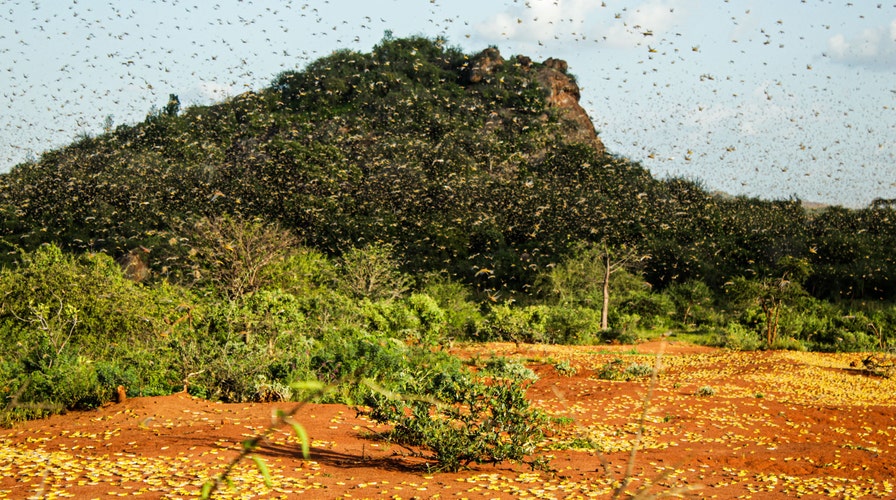Fox News Flash top headlines for June 5
Fox News Flash top headlines are here. Check out what's clicking on Foxnews.com.
Vast locust swarms in East Africa could put almost 5 million people in the region at risk of hunger and famine, according to the International Rescue Committee.
“A fourth generation of desert locusts up to 8,000 times larger than previous swarms could destroy crops at the start of the hunger season and leave millions facing food insecurity and famine,” explained the aid organization in a statement. “This the most serious desert locust outbreak seen in East Africa in 70 years, and compounded by the COVID-19 pandemic, poses an unprecedented risk to the region.”
Huge locust swarms have recently hit East Africa, India and Pakistan, exacerbating the problems caused by coronavirus. Climate change has been partly blamed for the outbreak.
HUGE LOCUST SWARMS HIT INDIA, EAST AFRICA AMID CORONAVIRUS PANDEMIC
The IRC notes that the locust infestation, which first arrived in East Africa last June, is feeding on hundreds of thousands of hectares of crops spanning at least eight countries.

Photo taken on Feb. 4, 2020 shows a cloud of locusts flying in Mwingi North, Kenya. (Xinhua/Fred Mutune via Getty Images)
“The Desert Locust is the world’s most dangerous migratory pest,” said Barri Shorey, senior director of Economic Recovery for the IRC, in the statement. “A one-square-kilometer [0.39 square mile] locust swarm is capable of consuming the same amount of food in one day as approximately 35,000 people.
“Without an immediate increase of prevention measures, we could be on the verge of a famine like we have never seen before,” she added.
CORONAVIRUS MAKES IT HARDER TO BATTLE SWARMS OF LOCUSTS RAVAGING AFRICA

In this photo taken Tuesday, Feb. 4, 2020, young desert locusts that have not yet grown wings crowd together on a thorny bush in the desert near Garowe, in the semi-autonomous Puntland region of Somalia. (AP Photo/Ben Curtis)
The IRC is involved in a desert locust task force in Somalia, which it says is the worst affected country in the region.
CLICK HERE TO GET THE FOX NEWS APP
“The current situation remains extremely alarming in East Africa where Kenya, Ethiopia and Somalia continue to face an unprecedented threat to food security and livelihoods,” explains the Food and Agriculture Organization of the United Nations. “New swarms from current breeding will form from mid-June onwards, coinciding with the start of the harvest.”
The Associated Press contributed to this article.
Follow James Rogers on Twitter @jamesjrogers

